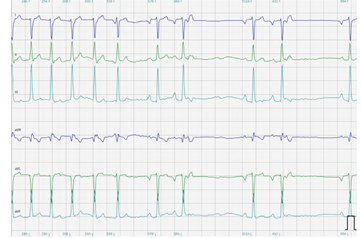Brave Pet of the Month….Mitzy!
Mitzy’s owners came to see us at Hollybank in October because they were worried about her heart. On a few occasions at home, they had heard her heart beating very loudly which is very unusual to experience without a stethoscope!
We already knew Mitzy had a heart condition called mitral valve disease which had been diagnosed by our visiting cardiologist by an echocardiogram (an ultrasound of the heart).This condition is where the mitral valve becomes thickened and will leak blood back into the left atrium of the heart. This backwards flow of blood is turbulent and produces the noise we hear and call a heart murmur. The backwards flow causes an increased volume of blood in the left atrium, which leads to an enlargement of the chamber as the heart tries to compensate. Once the heart can no longer compensate, congestive heart failure may develop as fluid builds up in the lungs.
Mitzy’s last echocardiogram was in February of this year and showed Mitzy was compensating well, did not yet require any medications and she was due for a routine echocardiogram in November. However, when we listened to Mitzy’s heart, initially, a normal heart rate was heard, but then Mitzy’s heartbeat sped up and grew louder for about 10 seconds. This made us concerned that Mitzy was experiencing runs of tachycardia (increased heart rate), and during these times, her heart was unlikely to be working efficiently.
We started some medications to improve the contractility of Mitzy’s heart and planned for her to see the cardiologist that week. Mitzy had repeat echocardiography, an electrocardiogram (ECG) to look at her heart rhythm, blood pressure measurements and a blood test to rule out certain causes of the tachycardia i.e electrolyte imbalances. The blood pressure and blood tests were normal.
However, the ECG revealed an arrhythmia and runs of tachycardia up to 220 beats per minute! A normal heart rate for a dog is around 80-120. To see how frequently these were happening throughout the day, a 24-hour Holter ECG monitor was fitted to Mitzy’s chest. The Holter had lots of wires that stuck to Mitzy’s chest, so she had to wear a body suit and a buster collar to make sure she didn’t chew them! As always, Mitzy was a perfect patient and kept her holter on the whole time despite her not looking very impressed with us!
The Holter report showed that the periods of tachycardia were happening frequently, so antiarrhythmic medication was required to try and correct this. Two weeks after starting the medication a new Holter ECG monitor would be repeated to assess her response. Shortly after starting the medications, Mitzy’s owner noticed an improvement at home in her – she seemed to have more energy and her heartbeat had only been heard once when she had got excited.
When Mitzy had her repeat holter fitted the ECG readings had improved on the medication but there were still some abnormalities. To try to better control Mitzy’s arrhythmia the cardiologist decided to try a different type of anti-arrhythmic medication and Mitzy is soon due to have her third Holter ECG monitor fitted.
Hopefully, the next ECG will show even more improvement but in the mean time we felt Mitzy deserved to be this month’s very brave pet!



